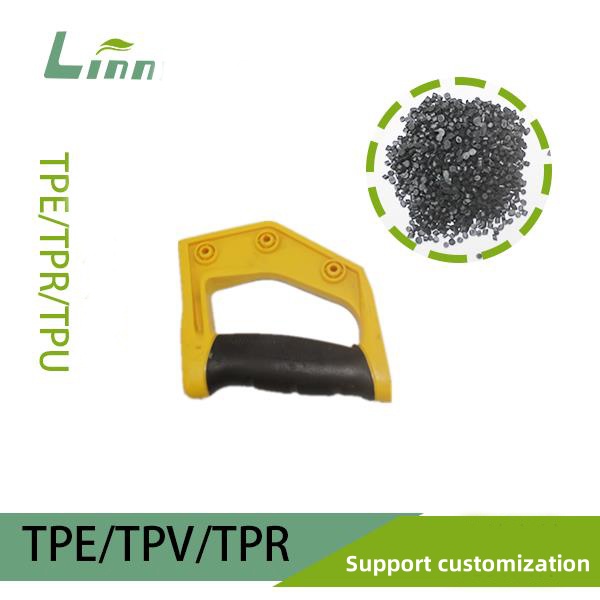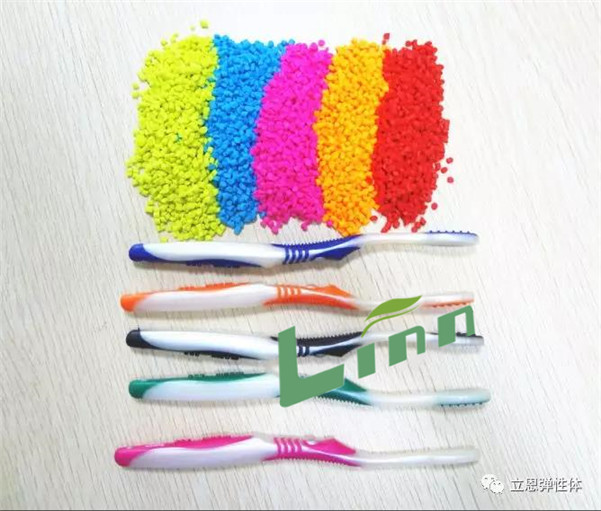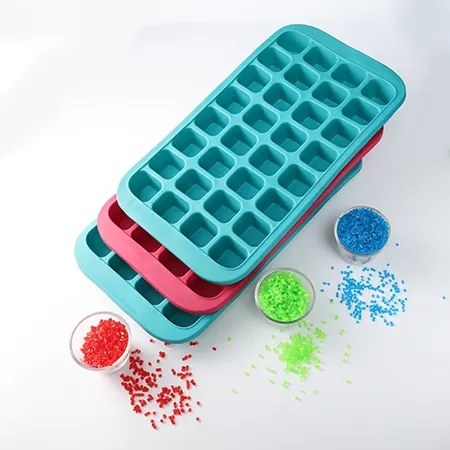Having worked in the plastics and compounding industry for over a decade, I’ve spent countless hours in production facilities, tweaking processes and troubleshooting issues. One recurring challenge that I’ve encountered—and one that many manufacturers face—is the odor generated during TPE granulation (thermoplastic elastomer granulation). The smell can range from mildly unpleasant to downright disruptive, affecting workers, nearby communities, and even product quality. Early in my career, I overlooked this issue during a TPE production run, only to receive complaints from the factory floor and a nearby office. That experience pushed me to dig into the causes and solutions. In this article, I’ll share my insights from years of hands-on work to explain why TPE granulation produces odors and how to address it, so you can keep your production line running smoothly and your workspace comfortable.

Understanding TPE Granulation
Before diving into the odor issue, let’s clarify what TPE granulation involves. TPEs are versatile, rubber-like materials that combine the elasticity of rubber with the processability of thermoplastics. They’re widely used in products like shoe soles, automotive parts, and medical devices. Granulation is the process of melting, compounding, and extruding TPE materials into pellets for further manufacturing. This involves high temperatures, additives, and mechanical processes, all of which can contribute to odor generation.
My first brush with TPE odors was during a project for a shoe sole manufacturer. The production line smelled like burnt plastic mixed with chemicals, and it was strong enough to make workers uneasy. After investigating, I realized the odor wasn’t just a nuisance—it was a sign of underlying process issues. Let’s break down the common causes of odors in TPE granulation and how to tackle them.
Common Causes of Odors in TPE Granulation
Based on my experience troubleshooting production lines, here are the primary reasons why TPE granulation produces odors, along with practical fixes.
1. Thermal Degradation of TPE Materials
TPEs are processed at high temperatures (typically 180-250°C), and excessive heat can cause the polymer to break down, releasing volatile organic compounds (VOCs) that produce a burnt or acrid smell.
Causes:
Overheating: Setting the extruder temperature too high for the specific TPE grade.
Long residence time: Material sitting too long in the barrel, especially during slow production or stoppages.
Poor material quality: Low-grade TPEs or recycled materials may contain impurities that degrade faster.
Incompatible blends: Mixing TPEs with incompatible polymers or additives can lead to degradation.
Fixes:
Check the recommended processing temperature for your TPE grade (usually provided in the material’s technical data sheet). I always keep a copy of the TDS handy during setup.
Optimize screw speed and feed rate to reduce residence time. In one factory, adjusting the screw speed cut odor by 30%.
Use high-quality, virgin TPE or vetted recycled materials. I switched a client to a better-grade TPE, and the odor dropped significantly.
Ensure proper blending by testing compatibility in small batches before full production.
I recall a project where a TPE compounding line smelled like burnt rubber. The extruder was set 20°C above the recommended temperature. Lowering it and tweaking the screw speed solved the issue, and the workers were visibly relieved.

2. Additives and Fillers Releasing VOCs
TPE formulations often include additives like plasticizers, stabilizers, or flame retardants, which can release odors when heated. These chemicals, such as phthalates or certain oils, volatilize during granulation, creating a chemical or oily smell.
Causes:
High plasticizer content: Soft TPEs (e.g., TPVs or TPU) often use plasticizers that evaporate at high temperatures.
Low-quality additives: Cheap stabilizers or fillers may break down, releasing stronger odors.
Incomplete mixing: Unevenly dispersed additives can create hot spots, intensifying VOC release.
Residual solvents: Some additives contain trace solvents that vaporize during processing.
Fixes:
Switch to low-VOC or odorless additives where possible. I worked with a supplier to source phthalate-free plasticizers for a medical TPE, which reduced odors dramatically.
Use high-quality additives from reputable suppliers. In one case, upgrading stabilizers eliminated a chemical smell in a toy manufacturing line.
Improve mixing by adjusting the compounding process, such as using a twin-screw extruder for better dispersion.
Pre-dry additives to remove residual solvents. A pre-drying step at 80°C for 2 hours worked wonders in a recent project.
In a factory producing TPE grips, the strong oily smell came from low-grade plasticizers. Switching to a higher-quality alternative not only reduced the odor but also improved the product’s feel.
3. Contamination or Impurities in Raw Materials
Contaminated or impure raw materials can introduce unwanted odors during granulation. This is especially common when using recycled TPE or mixing different batches.
Causes:
Foreign materials: Dust, dirt, or organic residues in recycled TPE can burn or volatilize.
Mixed polymer types: Combining incompatible polymers (e.g., TPE with PVC) can produce foul odors.
Moisture content: Wet materials can cause hydrolysis or steaming, leading to a musty smell.
Degraded pellets: Reusing overprocessed pellets can release burnt odors.
Fixes:
Inspect and clean raw materials before processing. I use a simple visual check and sometimes a sieve to catch debris.
Segregate polymer types and avoid mixing incompatible materials. I label storage bins clearly to prevent mix-ups.
Pre-dry TPE pellets at 70-90°C for 2-4 hours to remove moisture. This eliminated a steamy smell in a cable insulation project.
Limit regrind use to 10-20% and ensure it’s from the same batch. Overusing regrind once caused a burnt smell in a client’s line.
A memorable case was a TPE plant where recycled pellets were contaminated with organic residue. The smell was like burnt coffee. Filtering the material and adding a pre-drying step fixed it.

4. Inadequate Ventilation or Fume Extraction
Even with optimized processes, some odor is inevitable due to the nature of TPEs. Without proper ventilation or fume extraction, these odors can accumulate, affecting workers and nearby areas.
Causes:
Poor airflow: Enclosed or poorly ventilated factories trap VOCs and fumes.
Undersized fume extractors: Weak or outdated extraction systems can’t handle the volume of emissions.
Improper exhaust placement: Exhaust vents too close to workers or air intakes can recirculate odors.
Lack of maintenance: Clogged filters in extraction systems reduce efficiency.
Fixes:
Install local exhaust ventilation (LEV) near the extruder’s die head to capture fumes at the source. I added LEV to a TPE line, cutting odors by 50%.
Use high-capacity fume extractors rated for VOCs. I recommend systems with HEPA and activated carbon filters.
Position exhaust vents away from work areas and air intakes. A factory I worked with moved their vents, solving complaints from an adjacent office.
Clean or replace extractor filters monthly. I schedule this as part of routine maintenance.
In a medical TPE plant, inadequate ventilation made the odor unbearable. Installing a dedicated fume extractor and improving airflow transformed the workspace.

5. Equipment Issues or Wear
Faulty or worn-out equipment can exacerbate odors by causing uneven heating or material buildup, leading to burning or off-gassing.
Causes:
Worn screws or barrels: Degraded components can cause material to stick and burn.
Dirty dies: Residue buildup in the extruder die can char and release odors.
Temperature control failures: Faulty sensors can cause overheating.
Improper screw design: A mismatched screw can lead to poor mixing and hot spots.
Fixes:
Inspect and replace worn screws or barrels every 1-2 years, depending on usage. I caught a worn screw early in a TPE line, preventing major odor issues.
Clean dies regularly with a wire brush or purging compound. I do this after every major run.
Calibrate temperature sensors quarterly to ensure accuracy. A faulty sensor once caused a 10°C overheat in a project.
Use a screw designed for TPE processing, with proper compression ratios. A custom screw improved output and reduced odors in a client’s plant.
A TPE cable manufacturer I worked with had a persistent burnt smell due to a clogged die. A thorough cleaning and a new purging routine eliminated it.
Summary of Odor Causes and Solutions
Here’s a table summarizing the main causes of odors in TPE granulation and their fixes, based on my field experience:
| Cause | Symptoms | Primary Source | Solution |
|---|---|---|---|
| Thermal Degradation | Burnt or acrid smell | Overheating, long residence time | Lower temperature, optimize speed |
| Additives Releasing VOCs | Chemical or oily smell | Plasticizers, low-quality additives | Use low-VOC additives, pre-dry |
| Contaminated Materials | Musty or burnt smell | Impurities, moisture | Clean materials, pre-dry pellets |
| Poor Ventilation | Lingering odors | Inadequate fume extraction | Install LEV, maintain filters |
| Equipment Issues | Burnt or uneven odors | Worn screws, dirty dies | Clean dies, replace components |
This table is a quick reference for diagnosing and addressing odor issues in your TPE granulation process.

Preventive Measures for Odor Control
Preventing odors is easier than dealing with them after the fact. Here’s what I’ve learned to minimize smells:
Optimize Processing Parameters
Stick to the manufacturer’s recommended temperature, screw speed, and feed rate. I keep a log of settings for each TPE grade to ensure consistency.
Use High-Quality Materials
Invest in virgin TPE or carefully vetted recycled materials. I always request samples from suppliers to test for odor before bulk orders.
Maintain Equipment Regularly
Clean dies, check screws, and calibrate sensors on a set schedule. I budget one day a month for thorough maintenance, which pays off in reduced downtime.
Enhance Ventilation
Install and maintain fume extractors and ensure good airflow. In one plant, adding two ceiling fans cut odor complaints by half.
Train Operators
Educate your team on proper TPE handling and equipment use. I run training sessions for new hires, focusing on avoiding common mistakes like overfeeding.
Real-World Case Studies
Let me share two experiences that highlight these issues. In a factory producing TPE seals, the line emitted a strong chemical smell, making workers dizzy. The issue was low-quality plasticizers in the TPE blend. Switching to a low-VOC alternative and installing a fume extractor resolved the problem, and the client reported better worker morale.
Another case involved a TPE plant for automotive parts where a burnt smell persisted. The extruder was running too hot, and the die was clogged with residue. Lowering the temperature by 15°C and implementing a weekly die-cleaning routine eliminated the odor and improved pellet quality.

When to Seek Professional Help
Some odor issues require expert intervention:
Persistent odors despite fixes: If you’ve tried everything and the smell remains, consult the TPE supplier or a compounding specialist. They can analyze the material for hidden contaminants.
Equipment failures: For worn screws, faulty sensors, or major clogs, contact the extruder manufacturer or a technician.
Regulatory concerns: If odors affect nearby areas, a ventilation engineer can design a compliant exhaust system.
In a recent project, a client’s odor issue persisted despite my fixes. A lab analysis revealed trace solvents in their recycled TPE. The supplier provided a cleaner batch, solving the problem.
Choosing Low-Odor TPE Formulations
When selecting TPE, consider:
Low-VOC grades: Some suppliers offer TPEs designed for low emissions, ideal for sensitive applications like medical or consumer goods.
Reputable suppliers: Brands like Kraton, Teknor Apex, or BASF provide high-quality TPEs with consistent performance.
Custom formulations: Work with a compounder to tailor the TPE for your application, minimizing odor-causing additives.
I helped a toy manufacturer switch to a low-VOC TPE from Teknor Apex, which not only reduced odors but also met strict safety regulations.

Conclusion: Tackling TPE Granulation Odors
Odors during TPE granulation are a common challenge, but they’re manageable with the right approach. From thermal degradation to additive VOCs, contaminated materials, poor ventilation, or equipment issues, identifying the root cause is the first step to a cleaner, safer workplace. My years in the industry have taught me that proactive maintenance, quality materials, and proper ventilation can prevent most odor problems.
Before your next production run, review your TPE grade’s processing guidelines, inspect your equipment, and ensure your ventilation system is up to par. If you’re new to TPE granulation, consult your material supplier or a compounding expert for tailored advice. With these steps, you can minimize odors, keep your team comfortable, and produce high-quality TPE pellets that meet your customers’ expectations.

Frequently Asked Questions
Q1: Can I completely eliminate odors in TPE granulation?
A: It’s tough to eliminate odors entirely, as some VOCs are inherent to TPE processing. However, using low-VOC materials, optimizing temperatures, and installing strong ventilation can reduce them significantly.
Q2: How do I know if my TPE material is causing the odor?
A: Test a small batch in a lab extruder. If the odor persists with proper settings, the material (especially additives or recycled content) is likely the issue. Contact your supplier for a cleaner grade.
Q3: Is it safe to work in a TPE granulation plant with strong odors?
A: Strong odors can indicate harmful VOCs. Use respirators with chemical filters, improve ventilation, and check material safety data sheets (MSDS) for health risks. Consult an industrial hygienist if needed.
Q4: How often should I clean my extruder to reduce odors?
A: Clean the die and barrel after every major run or monthly for heavy use. Use purging compounds for thorough cleaning. I schedule this to avoid residue buildup.
Q5: Can better ventilation alone solve TPE odor issues?
A: Ventilation helps but isn’t a complete fix if the root cause (e.g., overheating or low-quality additives) isn’t addressed. Combine it with optimized processing and quality materials for best results.





